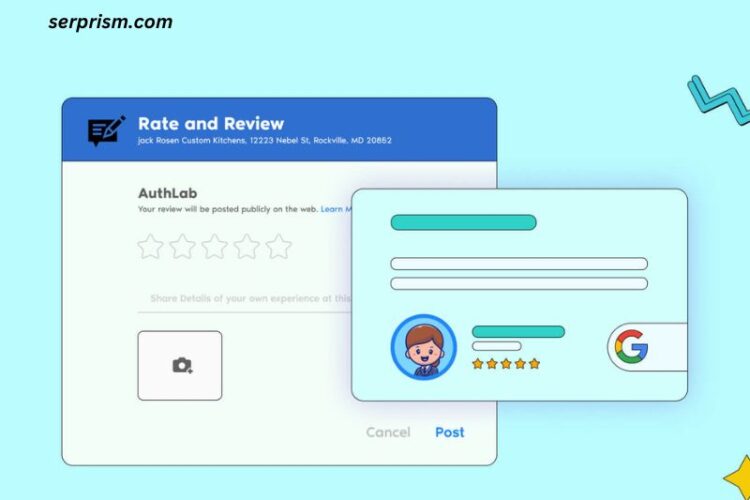
In the ever-evolving digital landscape, businesses are constantly seeking new ways to reach their target audiences and drive growth. Google Ads, formerly known as Google AdWords, has emerged as a powerful tool for businesses of all sizes to promote their products or services online. However, as with any advertising platform, managing your budget effectively is crucial to maximize your return on investment (ROI) and ensure long-term success.
One of the most important aspects of managing your Google Ads budget is setting a Monthly Spending Limit in Google Ads. This limit helps you maintain control over your advertising expenses and prevents overspending, which can quickly drain your marketing budget. In this comprehensive guide, we’ll explore the importance of setting a monthly spending limit, how to calculate your budget, and provide step-by-step instructions for implementing this feature in your Google Ads account.
Why setting a Monthly Spending Limit in Google Adsds
Establishing a Monthly Spending Limit in Google Ads campaigns is essential for several reasons:
- Budget Control: A spending limit ensures that your advertising costs remain within your predetermined budget, preventing unexpected expenses and financial strain.
- Optimization Opportunities: By closely monitoring your spending, you can identify areas for optimization and make data-driven decisions to improve your campaign performance.
- Forecasting and Planning: Setting a Monthly Spending Limit in Google Ads allows you to better forecast your advertising expenses and plan your marketing activities accordingly.
- Risk Mitigation: Implementing a spending limit helps mitigate the risk of overspending, which can be particularly detrimental for small businesses or those operating on tight budgets.
The benefits of setting a Monthly Spending Limit in Google Ads
Establishing a Monthly Spending Limit in Google Ads account offers numerous benefits that can contribute to the overall success of your advertising campaigns:
- Cost Control: By setting a spending limit, you can effectively control your advertising costs and prevent overspending, ensuring that your marketing budget remains intact.
- Improved Campaign Performance: With a defined budget, you can focus on optimizing your campaigns for maximum impact, allocating resources strategically to achieve better results.
- Increased Transparency: A Monthly Spending Limit in Google Ads greater transparency into your advertising expenses, allowing you to track and analyze your budget more effectively.
- Flexibility: Google Ads allows you to adjust your spending limit at any time, giving you the flexibility to adapt to changing market conditions or business needs.
- Peace of Mind: With a spending limit in place, you can rest assured that your advertising costs will not spiral out of control, providing you with peace of mind and allowing you to focus on other aspects of your business.
How to calculate your Google Ads budget
Determining an appropriate Monthly Spending Limit in Google Ads campaigns requires careful consideration of various factors, including your business goals, target audience, industry competition, and overall marketing budget. Here are some steps to help you calculate your Google Ads budget:
- Define Your Goals: Clearly define your advertising goals, whether it’s increasing website traffic, generating leads, or boosting sales. This will help you determine the appropriate budget allocation.
- Analyze Your Industry and Competition: Research your industry and competitors to understand the average cost-per-click (CPC) and cost-per-acquisition (CPA) rates. This will provide insights into the potential costs associated with your campaigns.
- Estimate Potential Revenue: Based on your historical data or industry benchmarks, estimate the potential revenue or return on investment (ROI) you can expect from your Google Ads campaigns.
- Consider Your Overall Marketing Budget: Determine the portion of your overall marketing budget that you’re willing to allocate to Google Ads campaigns.
- Start Small and Adjust: When starting with Google Ads, it’s often recommended to begin with a smaller budget and gradually increase it as you gain experience and see positive results.
Remember, calculating your Google Ads budget is an iterative process. As your campaigns progress, you can analyze the performance data and adjust your budget accordingly to optimize your return on investment.
Step-by-step guide to setting a Monthly Spending Limit in Google Ads
Setting a Monthly Spending Limit in Google Ads account is a straightforward process. Follow these steps to implement this feature:
- Log in to Your Google Ads Account: Access your Google Ads account by visiting ads.google.com and entering your credentials.
- Navigate to the Campaign Level: In the left-hand navigation menu, click on “Campaigns” to access the campaign management interface.
- Select the Desired Campaign: Choose the campaign for which you want to set a Monthly Spending Limit in Google Ads.
- Click on the Campaign Settings: In the campaign details section, locate and click on the “Settings” option.
- Scroll Down to the Budget Section: Within the campaign settings, scroll down until you find the “Budget” section.
- Set the Monthly Spending Limit: In the “Budget” section, you’ll see an option to set a “Monthly budget.” Enter your desired monthly spending limit in the provided field.
- Save the Changes: Once you’ve entered your desired Monthly Spending Limit in Google Ads, click on the “Save” button to apply the changes to your campaign.
It’s important to note that the monthly spending limit you set is a cap, not a fixed amount. Google Ads will automatically pause your campaign once the specified limit is reached for the billing cycle.
Tips for optimizing your Google Ads budget
While setting a Monthly Spending Limit in Google Ads is a crucial step in managing your Google Ads budget, there are several additional tips and strategies you can implement to optimize your advertising spend:
- Leverage Keyword Match Types: Utilize different keyword match types (broad, phrase, exact) to refine your targeting and improve the relevance of your ads, potentially lowering your cost-per-click.
- Implement Negative Keywords: Negative keywords help exclude irrelevant searches and prevent your ads from being displayed to unqualified audiences, reducing wasted ad spend.
- Optimize Ad Copy and Landing Pages: Continuously test and refine your ad copy and landing pages to improve click-through rates (CTR) and conversion rates, maximizing the value of each click.
- Utilize Ad Extensions: Ad extensions, such as sitelinks, callouts, and structured snippets, can increase the visibility and appeal of your ads, potentially leading to higher click-through rates without additional costs.
- Leverage Audience Targeting: Use Google Ads’ audience targeting options, such as remarketing and in-market audiences, to reach highly relevant users and improve the efficiency of your campaigns.
- Monitor and Adjust Bids: Regularly review your campaign performance and adjust your bids based on conversion data to ensure you’re allocating your budget effectively across different keywords and ad groups.
- Implement Automated Bidding Strategies: Google Ads offers various automated bidding strategies, such as Target CPA (Cost-Per-Acquisition) and Target ROAS (Return on Ad Spend), which can help optimize your bids and maximize your return on investment.
Remember, optimizing your Google Ads budget is an ongoing process. Continuously monitor your campaigns, analyze performance data, and make data-driven adjustments to ensure you’re achieving your desired results while staying within your budget constraints.
Common mistakes to avoid when Monthly Spending Limit in Google Ads
While setting a Monthly Spending Limit in Google Ads is a crucial step in managing your Google Ads budget, there are several common mistakes that advertisers should avoid:
- Setting an Unrealistic Limit: Establishing a monthly spending limit that is too low or too high can hinder the effectiveness of your campaigns. It’s essential to strike a balance based on your business goals, industry competition, and overall marketing budget.
- Neglecting to Monitor and Adjust: Failing to regularly monitor your campaign performance and adjust your spending limit accordingly can lead to missed opportunities or overspending.
- Overlooking Seasonal Fluctuations: Seasonal trends and fluctuations in demand can impact your advertising costs. Neglecting to account for these variations can result in inefficient budget allocation.
- Ignoring Conversion Data: Setting a spending limit without considering your conversion data and return on investment (ROI) can lead to suboptimal budget allocation and missed opportunities for growth.
- Failing to Optimize Campaigns: Simply setting a spending limit is not enough; you must continuously optimize your campaigns through strategies like keyword refinement, ad copy testing, and audience targeting to maximize the impact of your budget.
- Overlooking Additional Costs: Google Ads can incur additional costs beyond the actual ad spend, such as agency fees or third-party management tools. Neglecting to account for these additional expenses can lead to budget overruns.
- Lacking Consistency: Inconsistent budget management, such as frequently changing your spending limit or pausing and restarting campaigns, can disrupt the flow of data and hinder your ability to make informed decisions.
By being mindful of these common mistakes, you can ensure that your Monthly Spending Limit in Google Ads is set appropriately and effectively utilized to achieve your desired advertising goals.
Tools and resources to help you manage your Google Ads budget
Managing your Google Ads budget effectively can be a challenging task, but fortunately, there are various tools and resources available to assist you:
- Google Ads Editor: This free desktop application from Google allows you to make bulk changes to your campaigns, including adjusting budgets and setting spending limits across multiple campaigns simultaneously.
- Google Ads Scripts: Google Ads Scripts is a powerful tool that enables you to automate various tasks, including budget management, using JavaScript code within your Google Ads account.
- Third-Party Bid Management Tools: Several third-party bid management tools, such as Optmyzr, Acquisio, and Kenshoo, offer advanced budget management features and automated bidding strategies to help optimize your Google Ads spend.
- Google Ads Performance Reports: Google Ads provides a range of performance reports, including the Cost Explorer and Auction Insights reports, which can help you analyze your ad spend and identify opportunities for optimization.
- Google Ads Learning Resources: Google offers a wealth of learning resources, including the Google Ads Help Center, Google Ads Academy, and Google Ads Certification programs, to help you improve your skills and knowledge in managing your Google Ads budget effectively.
- Online Communities and Forums: Engaging with online communities and forums, such as the Google Ads Community and Reddit’s r/PPC, can provide valuable insights, tips, and best practices from experienced advertisers and industry experts.
- Professional Consulting Services: If you require more personalized assistance, consider engaging with professional Google Ads consultants or agencies that specialize in budget management and campaign optimization.
By leveraging these tools and resources, you can streamline your budget management processes, gain valuable insights, and make data-driven decisions to maximize the impact of your Google Ads campaigns.
Case studies: Successful Google Ads budget management
To illustrate the benefits of effective Google Ads budget management, let’s explore two case studies of businesses that successfully implemented and optimized their Monthly Spending Limit in Google Ads:
Case Study 1: E-commerce Retailer
An e-commerce retailer selling outdoor gear was struggling to maintain profitability due to rising advertising costs. They decided to implement a monthly spending limit in their Google Ads account and focus on optimizing their campaigns for maximum efficiency.
By setting a monthly spending limit, they were able to control their advertising costs and prevent overspending. Additionally, they leveraged audience targeting and ad extensions to improve the relevance and visibility of their ads, resulting in higher click-through rates and lower cost-per-acquisition.
Through continuous monitoring and adjustments, the e-commerce retailer was able to allocate their budget more effectively, driving increased sales while maintaining a healthy return on investment (ROI).
Case Study 2: Software-as-a-Service (SaaS) Company
A SaaS company offering project management software was struggling to generate high-quality leads from their Google Ads campaigns. They decided to implement a monthly spending limit and focus on refining their targeting and ad copy.
By setting a monthly spending limit, the SaaS company was able to maintain control over their advertising costs while experimenting with different targeting strategies and ad copy variations. They leveraged negative keywords and audience targeting to ensure their ads were reaching the most relevant audiences.
Through continuous testing and optimization, the SaaS company was able to improve their conversion rates and generate higher-quality leads, ultimately increasing their customer acquisition while staying within their predetermined budget constraints.
These case studies demonstrate the importance of effective budget management in Google Ads and the potential benefits it can provide, including cost control, improved campaign performance, and increased return on investment.
Conclusion
Mastering your Google Ads budget is essential for achieving long-term success in your advertising campaigns. By setting a Monthly Spending Limit in Google Ads, you can maintain control over your advertising costs, prevent overspending, and allocate your budget more effectively.
Throughout this comprehensive guide, we’ve explored the importance of setting a monthly spending limit, provided step-by-step instructions for implementing this feature, and shared valuable tips and strategies for optimizing your Google Ads budget.
Remember, effective budget management is an ongoing process that requires continuous monitoring, analysis, and adjustments. Leverage the tools and resources available, stay up-to-date with industry best practices, and don’t hesitate to seek professional assistance if needed.




